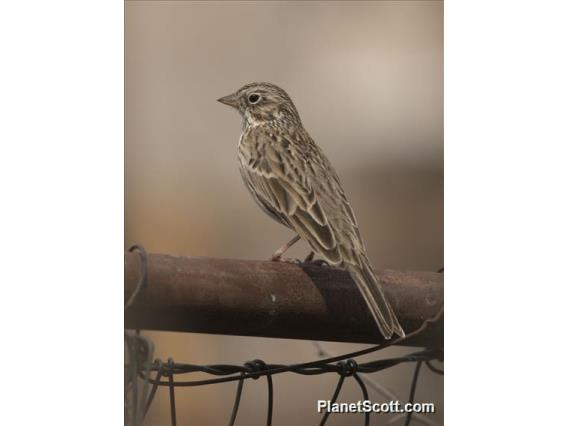Vesper Sparrow (Pooecetes gramineus)

Vesper Sparrow (Pooecetes gramineus)
×


Vesper Sparrow (Pooecetes gramineus)
About Vesper Sparrow (Pooecetes gramineus)
- Kingdom: Animals
- Phylum: Chordates
- Class: Birds
- Order: Perching Birds
- Family: Old World Buntings
The vesper sparrow is a medium-sized New World sparrow. The only member of the genus Pooecetes, it is a pale sparrow with brown streaks that breeds across the grasslands of northern North America. It migrates to winter in the southern United States and Mexico.
Source: Wikipedia
Visits
-
2008-10-19
Crissy Field, United States of America -
2012-06-02
Grayling, United States of America -
2012-07-12
Yellowstone National Park, United States of America -
2013-04-20
Attwater Prairie Chicken National Wildlife Refuge, United States of America -
2015-01-04
Panoche Valley, United States of America -
2018-04-22
Big Bend National Park, United States of America -
-
-
-
-





